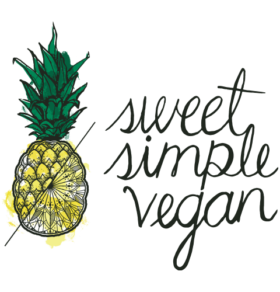
13 Jun Phytonutrients + A Rainbow Fruit Salad
A large portion of my diet consists of raw fruits and vegetables. Fruits and vegetables come in all the colors of the rainbow, and these colors actually reflect the presence of the different phytonutrients in each of them. Phytonutrients are naturally occurring chemicals that shield plants from disease and bacteria during growth, helping to protect the plant’s vitality. In our bodies, phytonutrients have health-promoting properties including antioxidant, anti-inflammatory, and liver-health activities. Since phytonutrients can also serve as the pigment in fruits and vegetables, phytonutrient-rich foods can be identified by colors.
Eat The Rainbow in order to promote happiness, health, and overall well-being 🙂
 So what do each of the colors represent?
So what do each of the colors represent?
Red
Many red fruits and vegetables contain lycopene, ellagic acid, quercetin, hesperidin and anthocyanidins.
Examples: Tomatoes, red cabbage, pomegranate, cherries, pink grapefruit, watermelon, strawberries, guava, etc.
Benefits: Supports prostate, urinary tract and DNA health. It is also studied to have shown protection against cancer and heart disease.
Orange and Yellow
Orange and yellow colored foods are rich in beta-carotene, alpha carotene, beta cryptoxanthin, lutein/zeaxanthin and hesperidin.
Examples: Carrots, cantaloupe, mango, yams, sweet potatoes, butternut squash, apricots, bananas, papaya, pineapple, etc.
Benefits: Good for eye health, healthy immune function, and healthy growth & development. Beta-carotene may help protect your cells against damage from environmental toxins and natural aging. Studies suggest beta-carotene may reduce the risk of certain cancers, including breast, colon, endometrial, lung and prostate.
Blue, Deep Red and Purple
Foods that are blue and purple contain resveratrol, anthocyanidins, phenolics and flavanoids.
Examples: Blueberries, blackberries, plums, eggplant, beets, cherries, purple grapes, etc.
Benefits: Great for the heart, brain, bones, arteries and cognitive health. Anthocyanin may help increase the vitamin C levels in your cells to boost immunity and help prevent damage from free radicals and act as anti-inflammatories to protect against heart disease and stroke.

Rainbow salad: blueberries, kiwi, pineapple an strawberries 🙂
Green
Green foods contain lutein/zeaxanthin, isoflavones, EGCG, indoles, isothiocyanates and sulphoraphane.
Examples: Broccoli, kale, collards, spinach, avocado, kiwi, honeydew, green beans, cabbage, etc.
Benfits: Support eye helth, arterial function, lier function, lung health and cell health. They have also been shown to help with wound healing and gum health. In conjunction with zeaxanthin, lutein may help protect eyes against macular degeneration and cataracts.
White
White foods contain EGCG, allicin, quercetin, indoles and glucosinolates.
Examples: White onion, pears, mushrooms, leeks, garlic, cauliflower, etc.
Benefits: Have been seen to support healthy bones, aterial function and the circulatory system. Also linked to help protect against heart disease and cancer. Garlic and onions contain allicin, which may help lower cholesterol and blood pressure.









No Comments